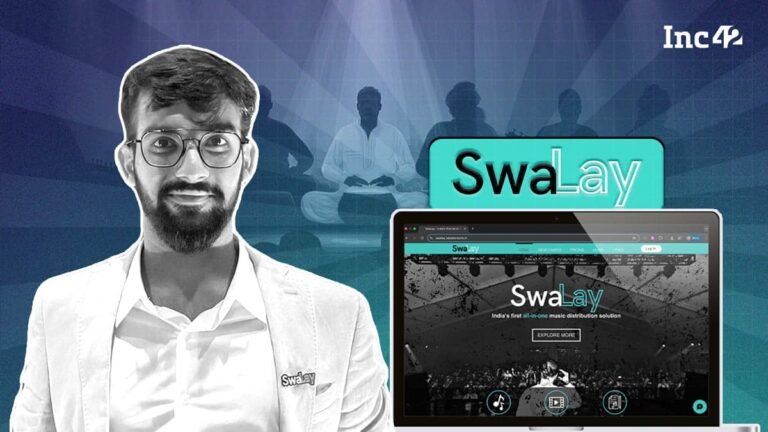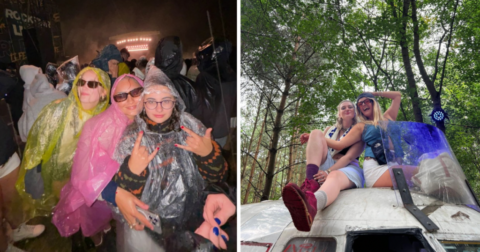Yin and Yang made the perfect ensemble when Pandit Ravi Shankar strummed his sitar with Beatles legend George Harrison crooning in the Concert for Bangladesh. New York’s Madison Square Garden that day stood witness to India’s strength in breaking the east-west divide, flattening the barriers between humans, and uniting the world in one voice – that of music.
In more than five decades since, Indian music, with its redoubtable universal appeal, has entered the digital age, turned sharper, subtler, and smoother. Be it folk songs from the hinterland, or classical Hindustani ragas, or modern-day Indie pop – digitisation has given Indian music the power to reach the remotest corner of the world.
Smart gadgets amplified digital music exponentially and created a $1.11 Bn industry that’s likely to reach $1.39 Bn by 2030 on the back of a 158.3 Mn-strong audience in India alone.
Yet, beneath the surface of this creative richness, lies a stark paradox.
The boom in the digital music economy remained largely confined to existing industry players. Algorithms push for the familiar names and playlists are usually made of popular works. Regional talent gets faded out in this loudness. The gap between cultural creation and commercial opportunity widens every day.
It falls out of tune for Indian music, which is acclaimed for bridging the world in troubled times, when such systemic disconnect shuts out potential voices. Independent artists often struggle with distribution, rights management, and royalty tracking – the basic infrastructure that all creators need.
Nikhil Jain, from the outgoing batch of engineering graduates at the Galgotias University, suffered the pain himself when he began as an independent artist. “While global platforms offer music distribution, none truly understands or fosters talent from grassroot India,” he said. But he didn’t give up on his dream. Instead, he sought to find a solution. SwaLay Digital came up in 2021 to help those unsung voices reach out to an audience.
SwaLay operates as a full-stack music distribution platform, where artists can sign up, upload their music files and have it go live on streaming apps like Spotify, YouTube Music and Apple Music. “All it takes is just a few clicks,” Jain said.
The platform also provides royalty management and performance analytics that tells the artists where their music is streaming and how they are performing – in terms of number of plays – across platforms and where the money (royalty) is coming from.
The startup also expands into the distribution of videos, lyrics, educational content and has its IPs to empower first-time artists and students.
The homegrown music-tech ecosystem targets creators aged 18-35 from tier II and III cities, student musicians, local labels and online content creators. SwaLay operates on a freemium and subscription-based model, where artists can start using the platform for free and then choose to subscribe for access to advanced features, such as metadata optimisation and promotional tools, for enhanced reach.
The startup has so far onboarded more than 8,000 independent and regional artists and has expanded to over 50 streaming and short video platforms. The bootstrapped startup generated INR 25 Lakh in revenue in FY25.

Making Of A Full-Stack Solution
Jain was in his early days of computer science engineering when he had his first brush with the gatekeepers of the music industry in 2021. While trying to release his own tracks, he was appalled by the lack of infrastructure, guidance and transparency that blocked the prospect for many talented artists.
In his pursuit of a solution, Jain combined his dual expertise in music and programming to set up SwaLay, designed specifically to break those barriers for independent artists.
But acceptance turned out to be the first challenge before Jain. Tired of exploitative platforms, independent artists viewed SwaLay as another distribution company promising the moon. Again, to break that perception, Jain developed tools that gave the creators complete control over their art and money. It earned him credibility.
“A key challenge was licensing and rights compliance, especially with cover songs. I built automated checks and guides for this,” he said. Technology helped him resolve pain points like real-time royalty and analytics tracking, enabling artists to see where their music is streamed and how they’re earning. It also includes a metadata engine that uses predictive analytics to suggest optimal genre placements and flag potential errors affecting visibility, along with a royalty intelligence panel that tracks revenue trends and identifies peak markets.
SwaLay’s full-stack ecosystem is structured on three core pillars. While competitors stop at uploading tracks to streaming platforms, SwaLay’s tech addresses the entire lifecycle.
- Music Distribution and Publishing: SwaLay offers metadata-rich distribution to over 30 global platforms, including Spotify and Apple Music. Its partnership with these platforms for publishing ensures that every artist’s work is protected and monetised effectively across global networks.
- Advanced Artist Services: This includes a personalised dashboard for royalty management and performance analytics, AI-powered tools for audio mastering and marketing content creation and support for release strategy and playlist pitching. Playlist pitching is the process of submitting a song to playlist curators on streaming platforms with the aim of getting it added to their playlists.
- Community and Creator Growth: At its core, the company believes in growth through collaboration with its indigenously developed Intellectual Properties (IPs), in four ways:
- A2A (Artist to Artist): According to Jain, this is India’s first peer-to-peer network designed to facilitate and promote collaborations between artists.
- The Voice of Campus: It is the company’s youth initiative that discovers and launches student creators directly from educational institutions.
- Indie Revolution: This is a multi-city campaign dedicated to celebrating and promoting diverse regional sounds. The company is set to add Shemaroo as its partner in this campaign.
- AstistDilSe: This emotion-first programme champions meaningful music with a powerful story.
SwaLay’s freemium model mirrors its artist-first approach. Revenue flows through multiple streams like label onboarding, publishing services, royalty collection and partnerships with platforms like Spotify and YouTube Music.
“We run A2A-based campaigns, collaborate with indie creators and use storytelling reels and memes on Instagram to explain our tools in a relatable way. We focus on colleges, underground creators and grassroots communities to spread awareness,” Jain shared. This approach has helped the music-tech startup sign up more than 8,000 creators, many from tier II and III cities, together releasing over 100 songs a month.
From Jain’s personal struggle to a bootstrapped startup with a revenue of INR 25 Lakh — SwaLay has sounded out its growing presence in the industry and is aiming at a 2.2 times growth in FY26.
Galgotias Offered The Perfect Launchpad
SwaLay took its baby steps in the corridors of the Galgotias University. For Jain and his ilk, the campus has never been just a place to study – it was as much a testing ground and a catalyst for ideas like SwaLay to proliferate.
Jain carried out a survey before floating the venture and spotted a critical gap in the system. Around 70% of students who wanted to create music had no idea how to publish their creations or earn royalties from them. Around the same time, one of Jain’s own tracks unexpectedly crossed 10,000 plays organically, sparking curiosity from fellow students who asked how he managed it.
“That’s when my mission crystallised: to build a system that doesn’t just distribute music but educates, empowers and builds a supportive ecosystem for every emerging artist,” Jain said.
Galgotias gave him the right environment to make that possible. He connected with creative peers and gained mentorship support while experimenting with real-time projects. “I had the freedom to prototype the early versions of SwaLay and interact with young creators who became the first users and testers of the platform,” Jain said.
Aiming For A Global Reach
In its more than 3,000 years of history, Indian music has traversed a long way, mesmerising the world with its lyrics, melody, and distinctiveness.
The shift from traditional media to digital platforms like Spotify, Apple Music, and Amazon Music has been decisive. Digitalisation has taken India’s $453.71 Bn music streaming market on an explosive growth trajectory, accelerating at 7.60% to reach $700.92 Bn by 2030.
This surge is powered by three growth engines – the ubiquity of smartphones, rapidity of internet penetration, and affordability of high-speed data packages that rank among the world’s cheapest.
Music-tech companies like SwaLay hitch a ride on this boom, but what sets Jain’s brainchild apart is its focus on the unserved or underserved talent. Its tie-ups with streaming platforms give it the distribution edge which, in turn, takes the creators to a wider audience that was out of bounds for them so far.
While competitors like Music Publisher India and TuneCore go full throttle on music publishing, distribution, promotion, cover song licensing, playlist pitching and catalogue optimisation, SwaLay chants the local tunes with its regional language-based onboarding.
Instead of using distribution as a transaction, SwaLay prioritises transparency – either through its real-time Royalty Tracker or through its upcoming Creator Passport that will give the artists a verified identity, consolidating the release history, rights information and collaboration details.
“We designed the Creator Passport system to simplify licensing and rights management,” Jain said. SwaLay maintains an accessible pricing format with its subscription starting from just INR 99, undercutting most competitors.
Over the next 12 months, the startup plans to build AI-based mastering and content tagging tools to expand into publishing rights and sync licensing. It also plans to set up creator hubs in universities and tie-ups with government-backed music incubators.
The company is aiming for a four-fold rise in artist onboarding and a three times growth in monthly recurring revenue in the next one year. “Our vision is to build a strong artist community in India by onboarding more than 50,000 creators and developing a mobile app for the platform,” said the founder.
“I want to see SwaLay become Asia’s leading music-tech ecosystem for non-film music, create a marketplace for music collabs and power 5% of India’s indie music revenue through our platform.”
Music thrives everywhere in India – from railway stations to college canteens – and SwaLay is unlikely to ever run out of crooners. But the bigger question remains on its long-term sustainability. In the growing cacophony of options for independent content creation, can SwaLay form the bedrock for India’s next musical revolution? The industry is all ears.





